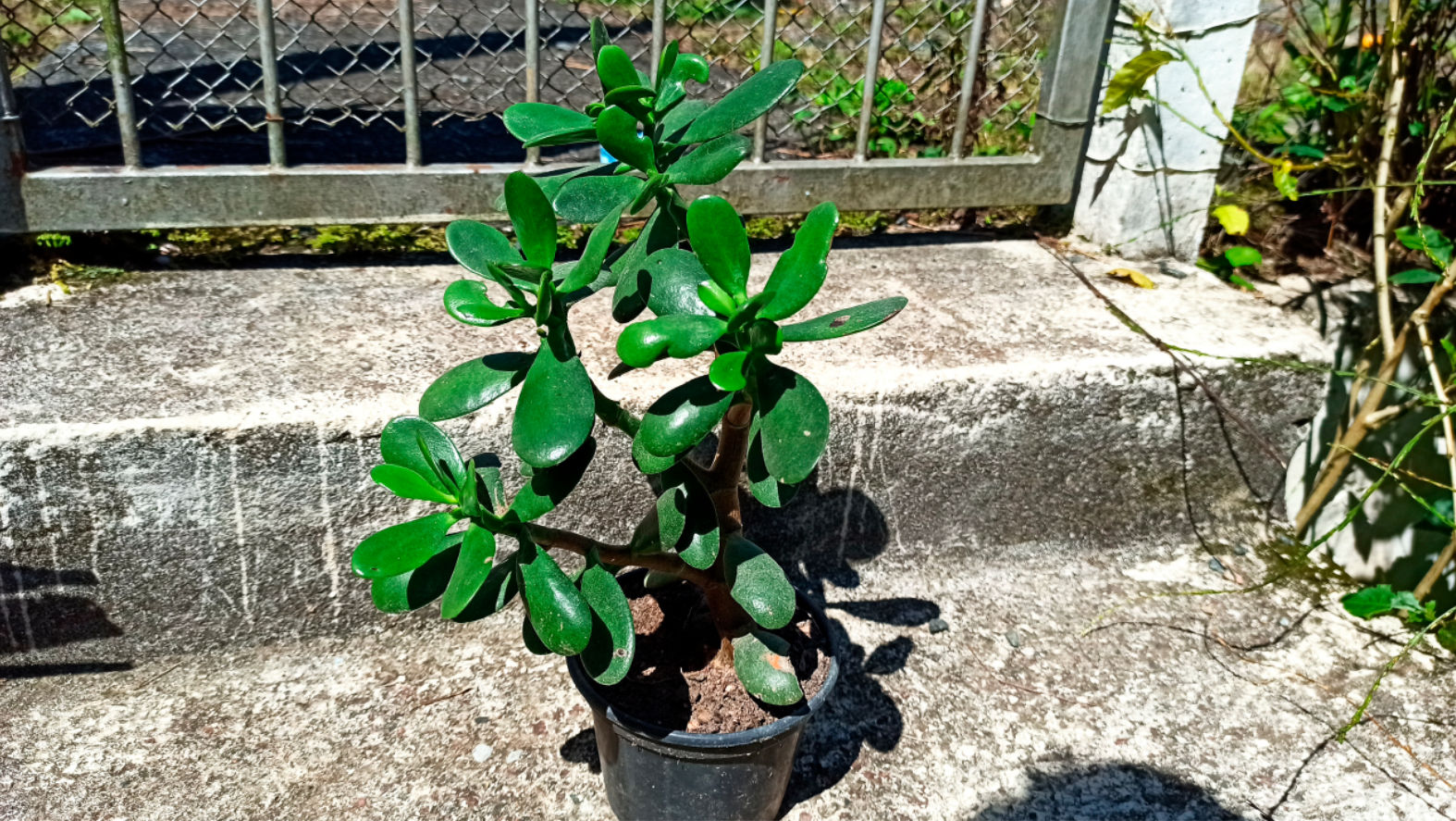Last updated on October 22nd, 2023 at 07:36 pm
Jade plants (Crassula ovata), also known as the money plant or lucky plant, are popular houseplants known for their attractive, fleshy leaves and ease of care. Here’s a guide on growing and caring for a jade plant:
1. Light:
- Jade plants thrive in bright, indirect light. Place your plant near a sunny window, but avoid exposing it to direct, harsh sunlight for extended periods, as it can scorch the leaves.
2. Temperature:
- Jade plants prefer average room temperatures between 65-75°F (18-24°C). They can tolerate brief periods of cooler temperatures but are sensitive to frost.
3. Soil:
- Use a well-draining cactus or succulent potting mix to ensure excess water doesn’t accumulate around the roots. You can also make your mix by combining regular potting soil with perlite or sand.
4. Watering:
- Allow the top inch of the soil to dry out between waterings. Water thoroughly when you do, but make sure the pot has good drainage. Overwatering can lead to root rot, so it’s important not to let the plant sit in standing water.
5. Humidity:
- Jade plants are adapted to dry conditions, so they don’t require high humidity levels. However, they may benefit from occasional misting, especially in dry indoor environments.
6. Container:
- Use a well-draining pot or container with drainage holes to prevent waterlogged soil.
7. Pruning:
- Prune your jade plant as needed to shape it or remove leggy or unhealthy growth. Use clean, sharp scissors or pruning shears.
8. Fertilizing:
- Fertilize your jade plant sparingly, typically once every 2-3 months during the growing season (spring and summer) with a balanced, water-soluble fertilizer, diluted to half-strength. Avoid fertilizing during the winter.
9. Repotting:
- Repot your jade plant every 2-3 years or when it becomes root-bound. Spring is an ideal time for repotting. Choose a slightly larger pot and refresh the soil.
10. Pests and Diseases: – Jade plants are generally resistant to pests, but they can occasionally be affected by mealybugs or scale insects. If you notice pests, remove them gently with a cotton swab dipped in rubbing alcohol. Ensure proper ventilation and avoid overwatering to prevent fungal issues.
11. Propagation: – Jade plants are easy to propagate from stem or leaf cuttings. Allow cuttings to dry for a day or two before planting them in a well-draining mix. New roots should develop in a few weeks.
12. Display: – Jade plants are often grown in pots and can make attractive indoor houseplants. They can also be grown outdoors in mild climates, but they should be protected from frost.
Jade plants are known for their longevity and are believed to bring good luck and financial prosperity. With proper care, your jade plant can thrive for many years and add a touch of greenery to your home or garden.

A hole is made in the soil and we introduce the stem to a sufficient depth where it stands firm.
Sunlight is vital for plant growthThat’s why we must ensure a space where it receives light indirectly, preferably for as many hours as possible.
Once the previous planting process is done, the plant must have time to root, which is a very effective process in jade, but it may take a few weeks. During this time it should not be watered to prevent the stem from rotting, but how do you know if it already has roots?
This is a very good question and is, according to experts, an indication of this is that they are observed new growth at the top of the stem. Another way to find out is to remove the stem from the pot to check if it has roots, but the latter is not highly recommended.
Care of jade plants
Because it was a fleshy plant, its water requirements are low, so before watering it we should make sure the soil is dry by inserting our finger at least two or three centimeters, if it is indeed dry, it is time to water it.
It is recommended to use a flower pot, which has drainage holes for better care of the plant and also be careful not to wet the leaves. You should try to get daylight, between five and six hours a day. If the leaves turn brown, this indicates that they are burning, as they are receiving a lot of sunlight. This brings us to the next point, if we want to change it, let’s try not to do it abruptly, that is, from a very bright place to a very dark place, because we will affect it.
we must keep the plant clean, eliminating the leaves that fall and if we want to prune some of them, this is also valid, always paying special attention not to prune too much the main stem since this weakens it.


